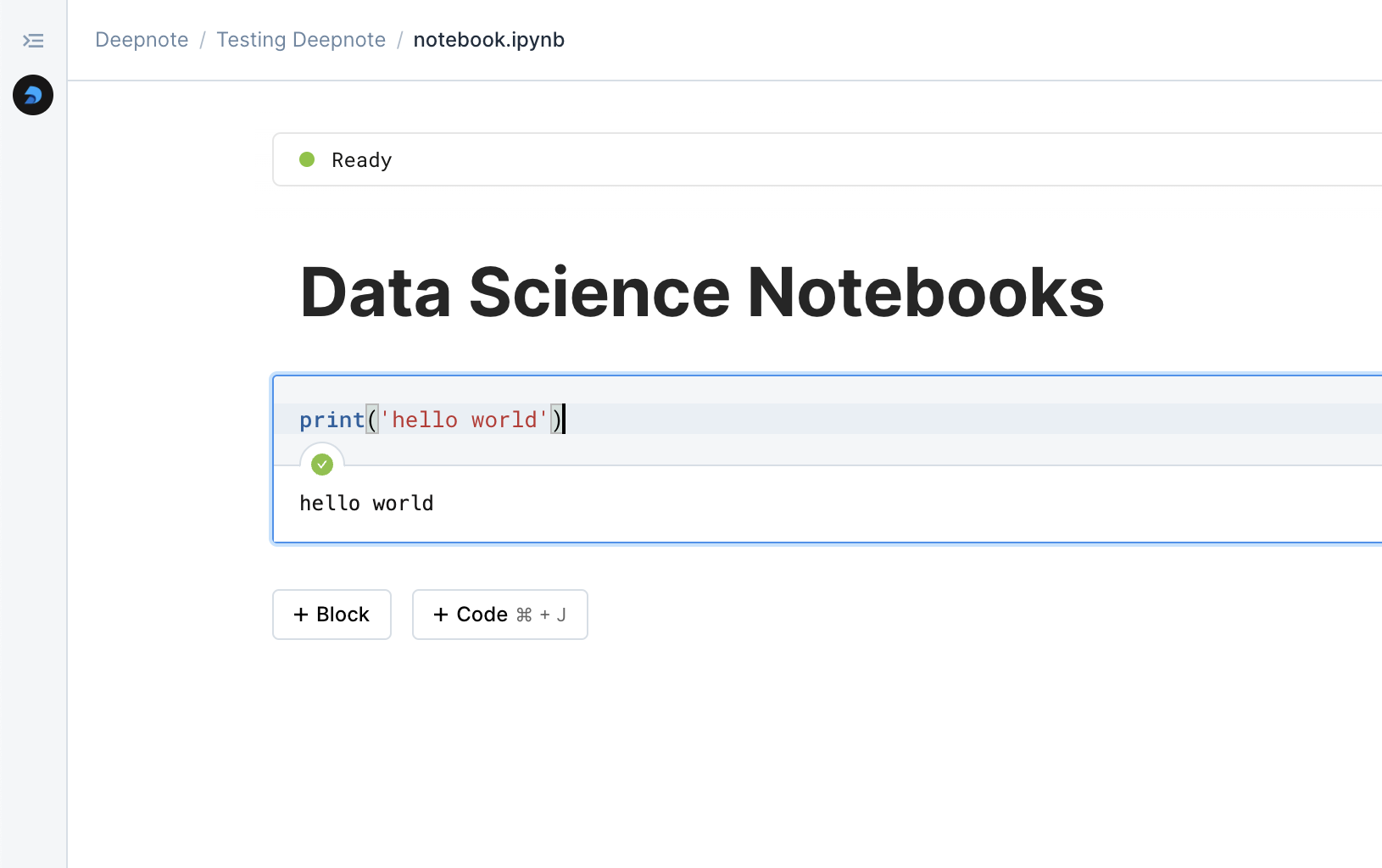

Noteable

Comparing two data science notebooks.






Noteable is a collaborative data science platform based on Notebooks, that is meant to service any teams performing EDA or ETL tasks. Noteable prides itself on its collaborative features, stating that teamwork isn’t just an afterthought, it’s the heart of every project.
Deepnote is a collaboration first data platform. It provides a powerful, cloud-based workspace that allows users to easily explore, collaborate on, and share data, create interactive charts and dashboards, and build and deploy machine learning models.
Let’s break it down.
AI
Let’s start with the hottest topic, AI. Deepnote features block AI to help you write, fix, and explain your code. As of the time of writing, Deepnote has a best-in-class AI autonomous AI agent that is able to create SQL blocks, Python Blocks, text blocks, all while running the notebook to make sure that it is getting the expected results, and fixing itself if it isn't. Noteable’s AI comes in the form of a ChatGPT plugin, which requires you to use ChatGPT to stream the results to Noteable.
Jupyter Compatibility
Both Deepnote and Noteable platforms are entirely Jupyter compatible. You will not have to learn any new proprietary Notebook. You will encounter the same Jupyter you know and love. You can upload your Notebooks as an IPYNB and instantly begin working on your Notebook.
Exploratory Coding
Deepnote and Noteable both have built support for Python and R. Noteable does not feature any coding assistance or code completion, whereas Deepnote uses state of the art AI code completion, provided by Codeium. Noteable does have a ChatGPT plugin, but it requires configuration.
Connecting to your data
Connecting to your various data sources, an essential part of data science, is handled eloquently by both platforms. Both Deepnote and Noteable feature a dizzying array of built-in data connectors for major cloud platforms, such as BigQuery, Snowflake, Redshift, Athena, and Clickhouse. This is complemented by both platforms with an easy drag-n-drop for CSVs. Deepnote has the slight edge in file based connections, where it has first class integrations with Google Drive, Google Cloud Storage, Amazon S3, Dropbox, OneDrive, and Google Sheets. Deepnote also allows for first class integrations with version control software such as Git and GitLab. Overall Deepnote has over double the amount of first class integrations.
Interacting and visualizing your data
SQL is an important chunk of any notebook, and both Deepnote and Noteable have you covered with Notebook SQL blocks, which come equipped with code completion and built in data frame outputs. Both apps come with built-in charting solutions, while still allowing users to use all python charting libraries with ease. Additionally, both platforms feature an in-app schema explorer, so you can get a grasp of your databases visually.
Publishing your data
If you don’t report your findings, did you find anything at all? Noteable allows you to share your notebook, with both visualizations and code available to public users. Deepnote ships with fully fledged reporting and dashboarding features called Deepnote Apps. Both platforms make it easy to schedule your notebook, prepare public views, and even have interactive views. Both platforms ship with fine grade permissioning that allows organizations to share reports publicly and within the organization.
Collaboration
It comes as no surprise, that since both platforms bill themselves as collaboration first, that both platforms share a numerous amount of features meant to increase collaboration. Fine tuned permissions, collaborative notebooks, multi-user editing, commenting.
Pricing
Deepnote comes equipped with a free tier, and a free two week trial on signup, with no credit card needed. Noteable also has a free tier, and also offers a two week free trial. Both platforms are almost identical in offerings, with slight differences in price and compute spend. With enterprise plans, both platforms want you to talk to their respective sales teams.
Conclusion
If you prioritize advanced AI capabilities and seamless coding assistance, or reporting, Deepnote may be the better choice. It offers a wider range of first-class integrations and an autonomous AI agent. On the other hand, if you prefer a platform that emphasizes collaboration and are willing to configure additional plugins, Noteable is a strong contender. Ultimately, your choice should align with your specific requirements and preferences.